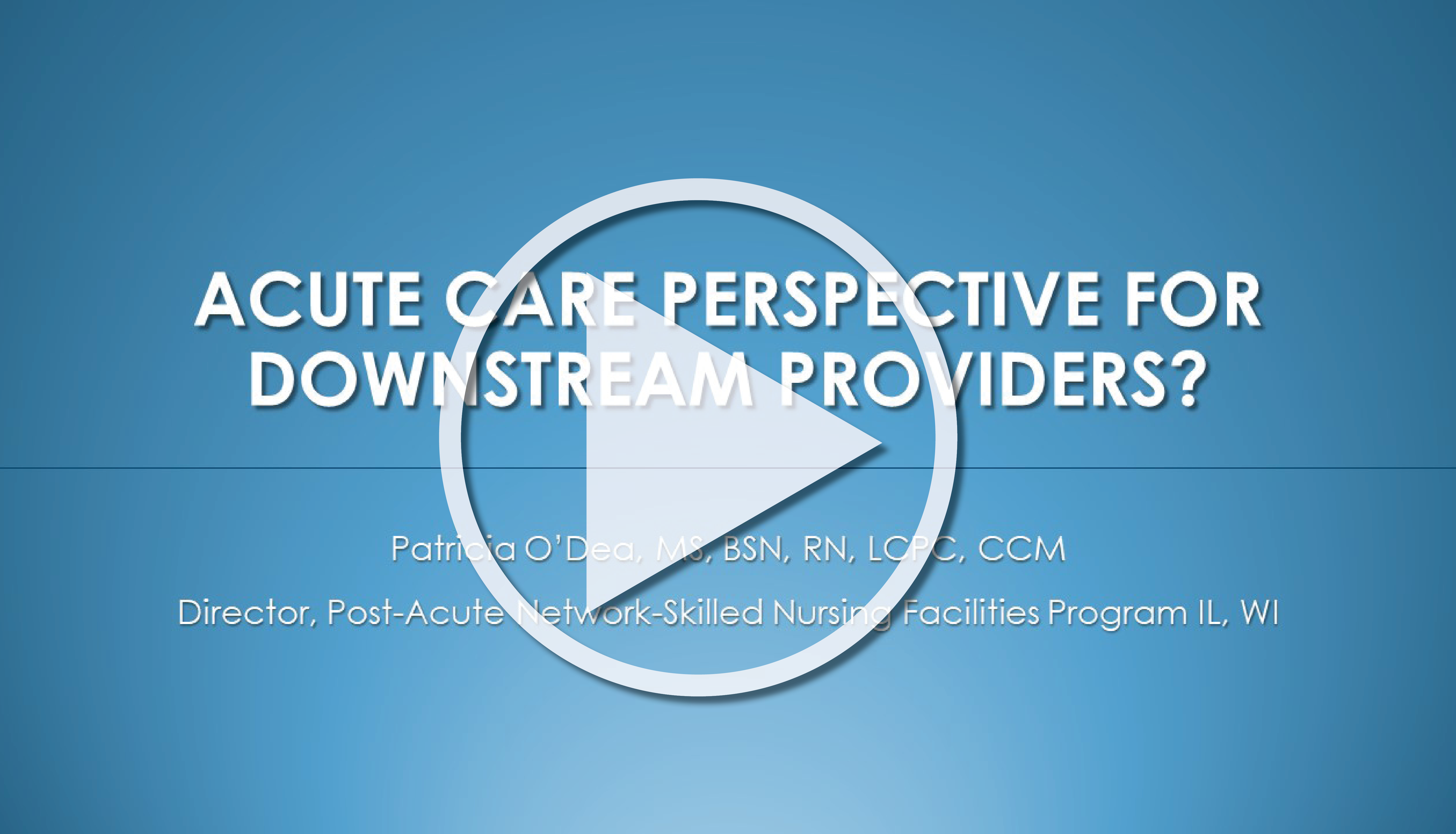
|
Acute Care Perspective for Downstream Providers
Pat O’Dea-Evans, Director of Post-Acute Network Administration
Advocate Aurora Health Care
Pat offered a unique perspective on how a large hospital system has effectively managed CDC, CMS and other regulatory guidelines to best meet the needs of a swiftly changing health care emergency. The discussion focused on the unique dynamics between acute care and SNF providers in a system where the PAN network is not owned by the system. Among many priorities, she stressed the need for collaborating with SNFs to assure adequate PPE supply and flow of patient information/plan of care details as patients swiftly transition through a pressure-tested continuum.
|
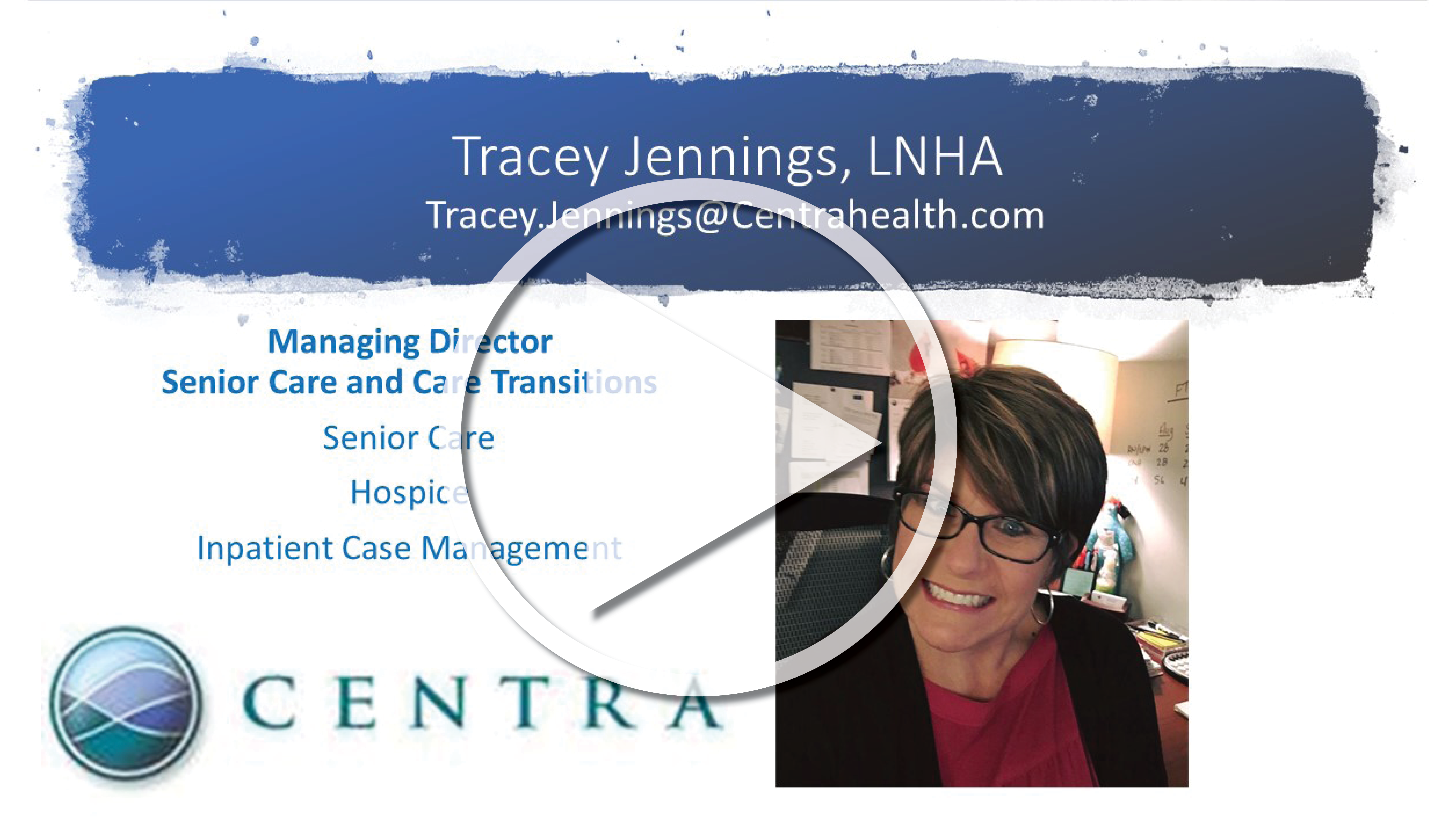
|
Operationalizing a Response Across a Network
Tracey Jennings, Managing Director of Senior Care & Care Transitions
Centra Health
She explained the impact for the larger community and the need to assess, model, and balance flow, surge and capacity within a network. Her teams prioritize key imperatives (e.g. staff training, leveraging medical directors as hospitalists, assuring appropriate PPE supply for contact isolation, processes in place to ‘over-communicate’, etc.). Their response strategy also necessitated vetting of an existing building as an alternative post-acute transitional care site to manage thru-put of a high volume of COVID-19 cases. Ms. Jennings concluded with provocative comments related to how COVID-19 will indeed transform the future of healthcare delivery, referencing recent changes in some regulatory barriers.
|
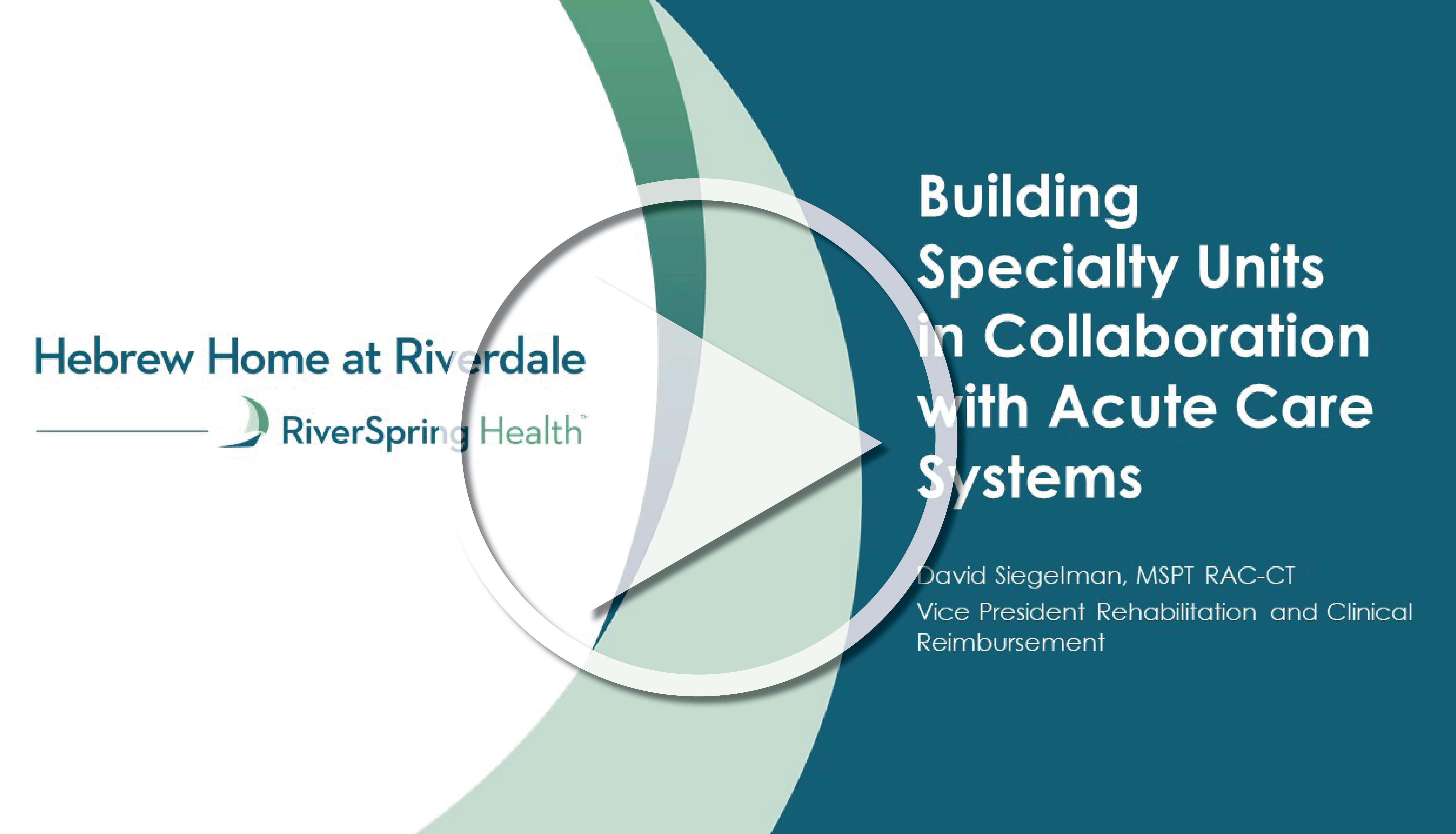
|
Building Specialty Units in Collaboration with Acute Care Systems
David Siegelman, VP of Rehabilitation and Reimbursement
Hebrew Home at Riverdale
Mr. Siegelman shared valuable best practices related to how their community leveraged a long-standing partnership with New York Presbyterian Medical Center to create one of the country’s first “COVID-19 Recovery Units.” His presentation detailed how this pioneer project started, how it moved swiftly and intentionally, and ultimately resulted in an impressive 22-bed unit that filled in only 4 days. Key takeaways/best practices included the importance of:
- Assessing/identifying clinical capabilities, need for PPE, staff, etc.;
- Proactively reaching out to acute care providers/networks;
- Transparency and proactive communication with staff and residents/families;
- Appropriately leveraging alternative treatment interventions (e.g.: virtual assessment/telemedicine)
|
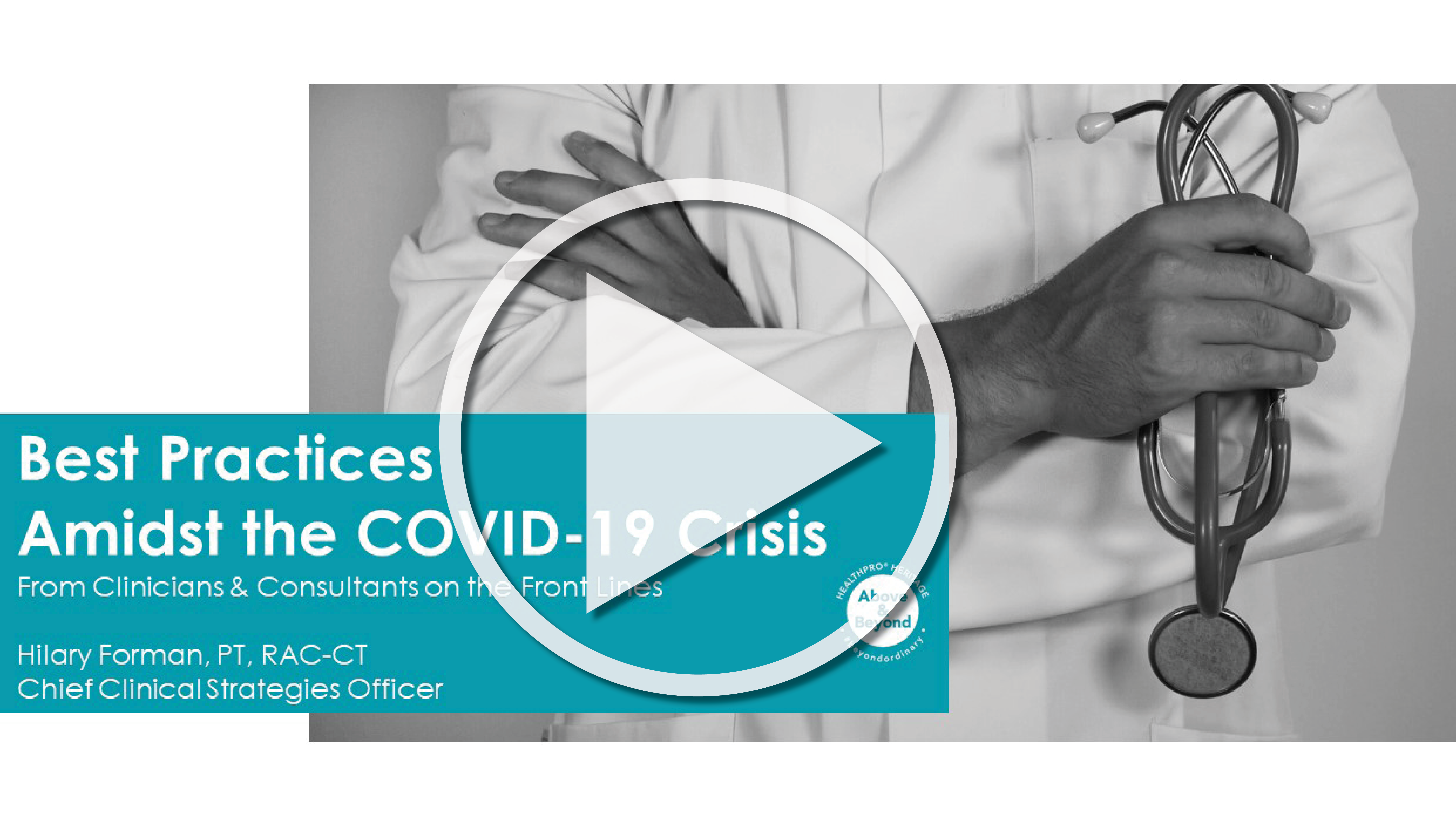
|
Clinician & Support Team Best Practices
Hilary Forman, Chief Clinical Strategy Officer
HealthPRO Heritage
Ms. Forman offered the perspective of a large national therapy & consulting organization on balancing the needs of both clinicians, customers, and patients. Very early on, HealthPRO Heritage established a COVID-19 Task Force to address three priorities, including:
- Safety of staff, clients and patients (inclusive of infection control readiness, monitoring and deployment of CMS/CDC directives, specific COVID-19 clinical protocols, etc.)
- Ongoing development & sharing of resources for partners and the industry as a whole inclusive of unique tools (such as PR- related resources, reimbursement support, regulatory interpretation, skill in place strategies, COVID-19 unit programming, etc.)
- Concise, consistent and fact-based communication for staff, customers and patients. Ms. Forman offered an example where her team facilitated communication and exchange of best practices between communities in hot spot areas that benefited one another.
|
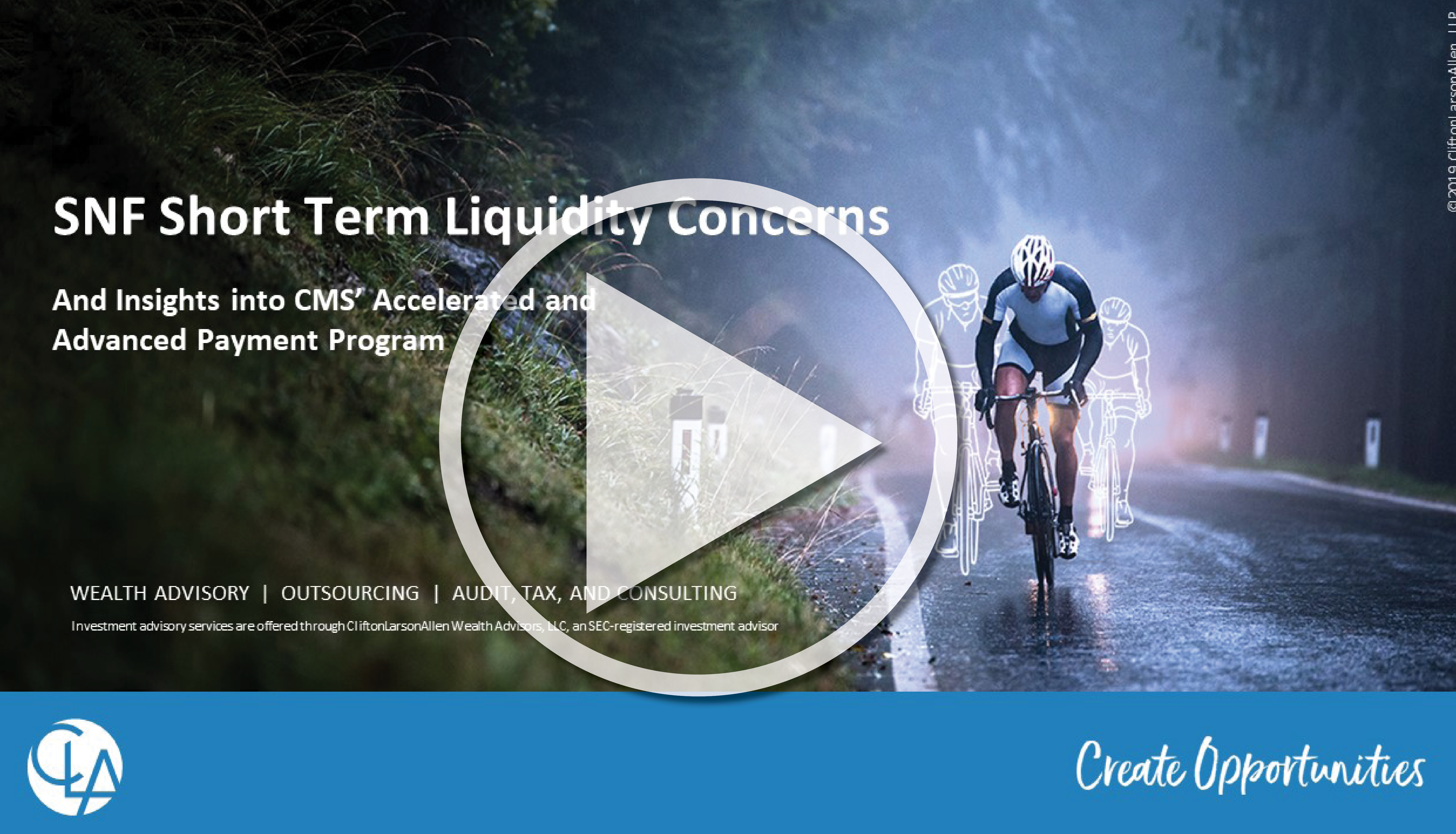
|
SNF Short Term Liquidity Concerns and Insights into CMS' Accelerated and Advanced Payment Program
Cory R. Rutledge, Principal - Senior Living Leader, Health Care
CliftonLarsonAllen
Mr. Rutledge shared CLA’s hypothesis that COVID-19 is disrupting referral patterns, resulting in a significant revenue shortfall and cash burn that will challenge the fragile SNF ecosystem. This dip in revenue will likely create a liquidity challenge, and it is unknown exactly where we are in this revenue dip or how long it will last.
There are 3 aspects that are going to put pressure on SNF clients: revenue shortfall; rising PPE cost; and rising staffing cost including overtime and hazard pay. CLA estimates between $6-9 billion dollars of liquidity could be needed for US nursing facilities by late June before the impact of any interventions. 70% of US SNF’s could be in a negative cash position by mid-May. CLA is recommending to their clients that operators proactively seek all relief opportunities from the federal and state level. This taking advantage of available funding and the accelerated and advance payment program.
|
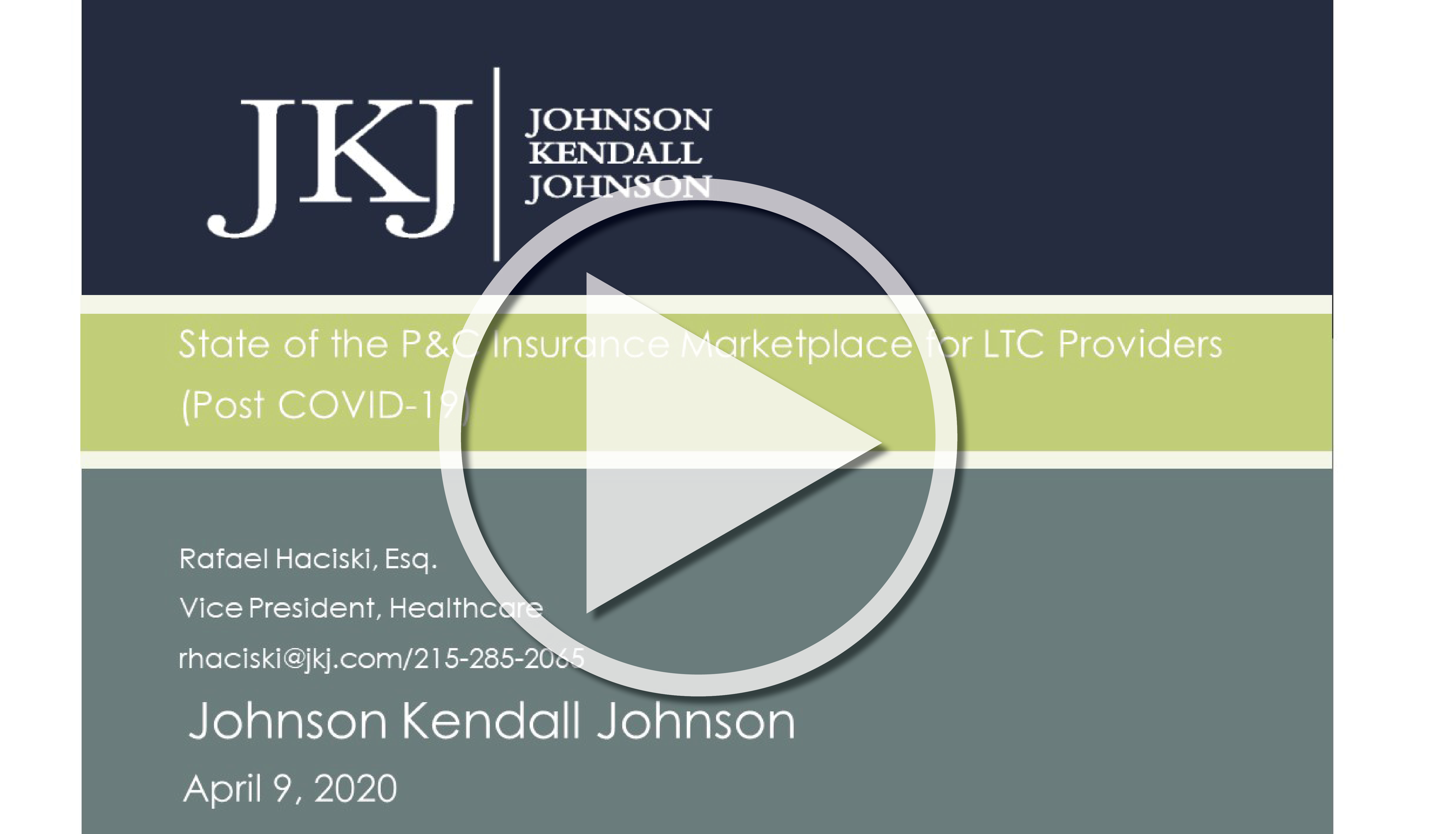
|
Current State of the Property & Casualty Market Serving Senior Services
Rafael C. Haciski, Vice President, Healthcare
Johnson Kendall Johnson
Ms. Haciski provided an update on property and casualty markets serving senior services. Even before COVID-19, JKJ saw a tough market with rising costs for senior living entities. It is anticipated that this will continue or worsen following the COVID-19 outbreak as the market returns for insurance carriers have been extremely negative.
Insurance carriers have responded in several ways, including:
- Delay in writing new business or no new senior living/long term care business;
- Attaching COVID-19 supplemental clauses for all renewals;
- Writing new business but with communicable disease exclusion;
- No longer interested in senior living at all due to volatility.
Carriers who do cover COVID-19 will want to see best practices put in place prior to coverage decision. Facilities need a well-documented COVID-19 preparedness plan to share with their broker.
|
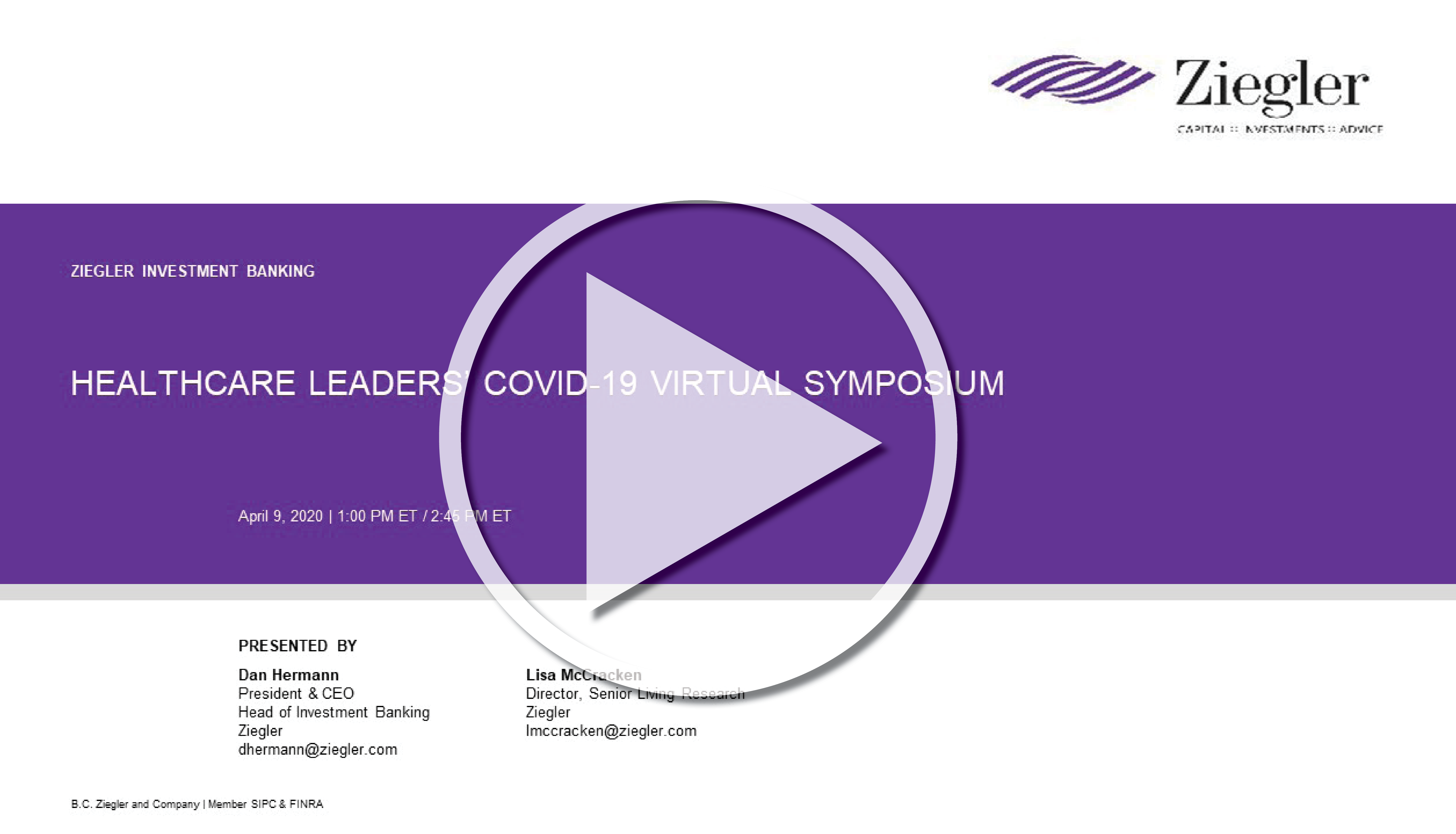
|
Changes in Terms, Lines of Credit, Covenant Requirements, Disclosures, and Investor Concerns
Dan Hermann, President/CEO
Lisa McCracken, Director, Senior Living Research
Ziegler
Ms. McCraken provided a market overview that included the following key takeaways:
- Fortunately, at the onset of the pandemic, providers were in a strong financial position and although there is market volatility, interest rates are still low versus the 30 year average:
- Providers need to be transparent with the investor market (EMMA disclosures, etc.) Ziegler is finding that investors are generally supportive of taking on additional debt at this time to get through the crisis (e.g.: paycheck protection, etc).
- There is significant slowdown in M&A activity that is expected to continue over the next few months with predictions that there will be increased activity once the immediate crisis ends.
Ziegler recommends that providers proactively scenario plan with their bankers.
|








